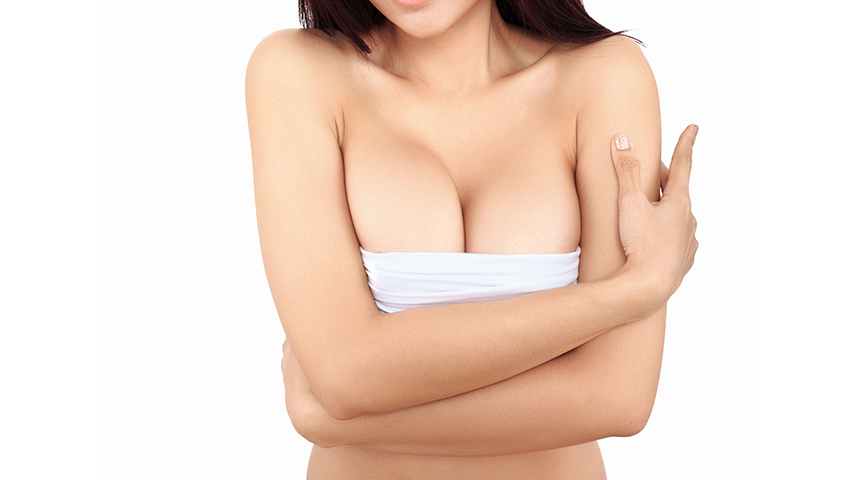Many women in Singapore choose to undergo mastectomy as a way to treat breast cancer. However, while mastectomy is still one of the leading treatments for breast cancer, the procedure may have a negative effect on how women see themselves. The operation affects their body image, making them feel incomplete. It also affects the way they interact with people. Women who’ve undergone mastectomy may develop lower self-esteem and develop a tendency to limit their social interactions. Breast cancer survivors turn to breast reconstruction surgery in order to bring back the body that they want. Within the last decade, there is a significant increase in the number of Singaporean women undergoing breast reconstruction surgery. Breast reconstruction reveals to reduce the psychological impact mastectomy has on women. It takes away women’s anxiety, especially about their physical appearance.
However, breast reconstruction is only the first part of restoring the breast. While breast reconstruction brings back the shape of the breast, it does not restore the look of the nipples and areola. One way to achieve the look is through Nipple & Areola Micropigmentation.
Nipple & areola micropigmentation after breast reconstruction surgery
Nipple & Areola Micropigmentation is a paramedical micropigmentation procedure that makes use of specialized pigments and devices to recreate the color and shape of the nipple-areola complex. It is designed for people who have had breast reconstruction after mastectomy, breast augmentation, or breast reduction. It aims to improve the aesthetic appearance of the breasts.
The procedure is usually done at least 3 months after having breast reconstruction surgery. Some patients undergo Micropigmentation to cover up scars from mastectomy or breast reconstruction surgeries. Remember that scars need to heal before having micropigmentation. Some scars may take more than a year to heal. Scar tissue is more sensitive than undamaged tissue, so the patient might feel more pain during the procedure, especially if the tattoo is on the scar tissue.
The procedure is not as simple as people might think. It takes into consideration the areola positioning with the breast shape and contour, the right color for the skin tone, and the nipple protrusion for realism. The whole procedure may take one to three hours, depending on whether one or both breasts will be done.
Nipple & Areola Micropigmentation is not a required procedure after breast reconstruction. Yet many patients find that the procedure helps improve their body image.
How does nipple & areola micropigmentation work?
Before the tattooing procedure, the client will have a consultation session with the Micropigmentation artist. Here, her medical history will be discussed in detail, as well as other surgeries and treatments she has in the future. During the consultation, the client can also go over any request or expectation, so that the results will be to her satisfaction.
Then, the artists will proceed to the color selection of pigments. The color will be customized for every client. For those who had bilateral breast reconstruction, the color blend can be done by complementing the skin tone or base it from the client’s photos pre-mastectomy. For unilateral breast reconstruction cases, the blend will be done to match the existing nipple areola color closely.
An electronic pen, with a sterile and disposable needle, is used to implant the color to the breast. The artist will then gradually build up the color effect. The procedure should not be painful, but some discomfort might be felt during the tattooing process. A numbing cream will be applied to ease the pain. When it is done, a dressing will be applied to cover the area.
The initial color after the surgery will be 20% to 30% darker. It will brighten after a few days. It takes 6 weeks before the final color of the pigment sets in. It is only after those 6 weeks can follow-up sessions be done to achieve the full desired result. The color from the procedure will last for 2 to 3 years.
Nipple & areola micropigmentation preparation
If a person decides to go through with Nipple & Areola Micropigmentation, thorough preparation is needed.
The first part of preparation is finding the right place and artist for the procedure. Finding the right micropigmentation artist and the studio is essential for excellent and safe results. Doctors and medical staff usually can recommend these things because it is a part of the healing process for breast cancer survivors. There are also local cancer support groups that can help with recommending artists and studios.
Of course, there are many studios and artists that can be searched online. In order to choose the best studio and artist, the following can be done:
- Visit Micropigmentation studios
- Make sure the artist and studio have the proper licenses
- Check on the hygiene, sterilization, and equipment the studio uses
- Ask to see a portfolio of the artist’s previous nipple and areola tattoos
Once finding the right artist and studio, a consultation will be scheduled to talk about then procedure and set the client’s expectations. Here, the client will discuss her medical history, the color of pigmented will be selected, and a patch test will be done. A patch test is done to know any allergic reaction the patient’s skin may have with the pigments. In this test, a small amount of pigment is applied to a small area, and it will be observed for 24 to 48 hours for any allergic reaction.
During the day of the procedure, make sure to do the following things to ensure the effectivity of the pigments:
- Take a shower before the treatment.
- Do not apply any lotions, creams or any products on your skin, especially the breast area.
- Wear a bra or a tight camisole to hold the dressing in place after the procedure.
Nipple & areola micropigmentation aftercare
After the procedure, redness or swelling may occur. It is normal. The breast may also appear tight; it will subside later on, usually within 1 week, or depending on the skin’s sensitivity.
Scabs will also appear due to bleeding from the procedure. It is important to remember not to pick or peel it off to prevent the pigment from fading and avoid any infection. These scabs will fall off naturally within 7-10 days.
In order to properly maintain the look of the pigmented area and avoid any complication, the following steps could be done during recovery:
- 24 hours after the procedure, the dressing may be removed.
- Do not shower 2 days after the treatment, but apply the prescribed ointment with a clean dressing for the next 2-3 days, or until the area has dried up.
- After 2 days, the patient can take a shower, but before bathing, apply a light coat of petroleum jelly over the area.
- Shower gels are not prohibited but do not rub or scrub the pigmented area. Also, do not let the water run over the area.
- After showering, gently pat the area with a clean towel.
Remember to do these instructions until the tattoo has healed. During recovery, also avoid the following to prevent fading of color or further infection:
- Touching with fingers or picking at scabs
- Swimming, hot tubs or saunas
- Long hot showers and baths
- Direct contact to sunlight, self-tanners, or tanning beds
- Exercise or any activity that may cause extreme perspiration
- Activities that would get the area dirty
- Lotions or creams other than the ointment recommended
Factors affecting results of nipple & areola micropigmentation
Several things could affect the results of the Micropigmentation process, such as the following:
- Medication
- Natural skin tones
- Skin characteristics such as; dryness, oily skin, sun damage,
- Thickness and acidity of the skin
- Alcohol intake
- Smoking
- Individual healing ability
Things to consider about nipple & areola micropigmentation
Like any other medical procedure, there are risks and possible side effects after having a Nipple & Areola Micropigmentation, such as the following:
- Allergy to the pigment
- Color mismatch
- Fading of the tattoo
- Uneven pigment color
- Infection
- Bleeding (especially after the procedure)
- Scarring
- Skin irritation
- Some discomfort during and post-procedure





